How Jeff Gordon Became NASCAR's 'Wonder Boy' and Changed a Sport Forever
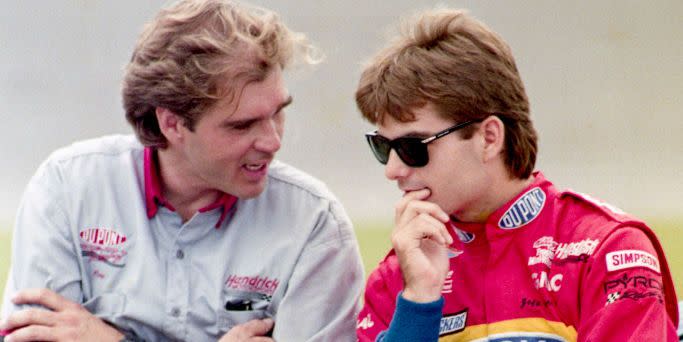
It’s impossible to chronicle the fullness of NASCAR’s history without a few words about Jeff Gordon.
Maybe a chapter in a book. Or even a few chapters. Perhaps a book all to itself. Even a full shelf of books about one of racing’s most accomplished drivers. After all, the driver once referred to as “Wonder Boy” helped change the sport for all time.
Gordon’s career stretched a quarter-century and produced some of the Cup Series’ most enduring and endearing moments. It’s likely that only a few competitors will ever be considered in his class, maybe a half-dozen whose influence helped mold the sport into what we have today.
Jeffery Michael Gordon stands amidst them.
From California by way of Indiana, the Hall of Famer came to stock cars after success on ESPN’s Thursday Night Thunder in the mid- to late-1980s. Those telecasts gave many Americans their first look at USAC’s Sprint Car, Midget, and Silver Crown stars, and Gordon certainly was among them. He was young, handsome, personable, and articulate, a rock star/teen idol clearly headed for bigger and better things.
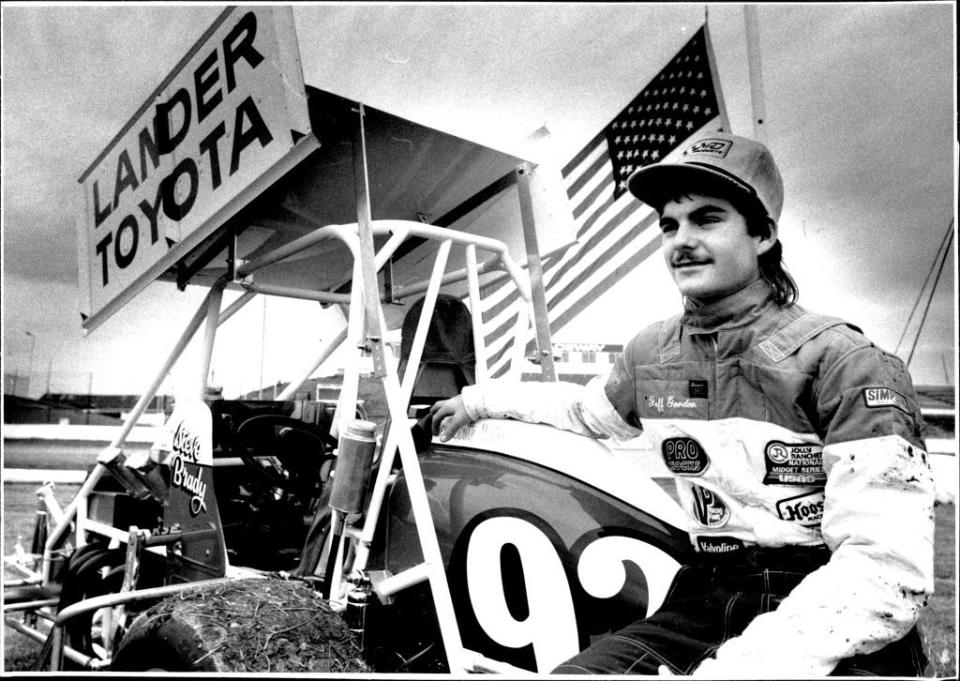
At first, NASCAR wasn’t prominent on his radar. He honed his skills and built his reputation in open-wheel, so IndyCar and the Indy 500 seemed logical destinations. But he fell into the clutches of NASCAR because he and his family couldn’t marshal the funds to buy a competitive IndyCar ride. History has recorded open-wheel’s loss as stock car’s gain.
He took a friend’s advice and attended the Buck Baker Driving School at the North Carolina Speedway at Rockingham. There, performing well and blessed by fate, he met stock car devotees who introduced him to mechanics who introduced him to team reps who introduced him to team owners. A couple of successful Xfinity Series seasons with owner Bill Davis led to an incomparable career in Cup with owner Rick Hendrick. For most of those years, crew chief Ray Evernham guided the No. 24 program to unprecedented heights.
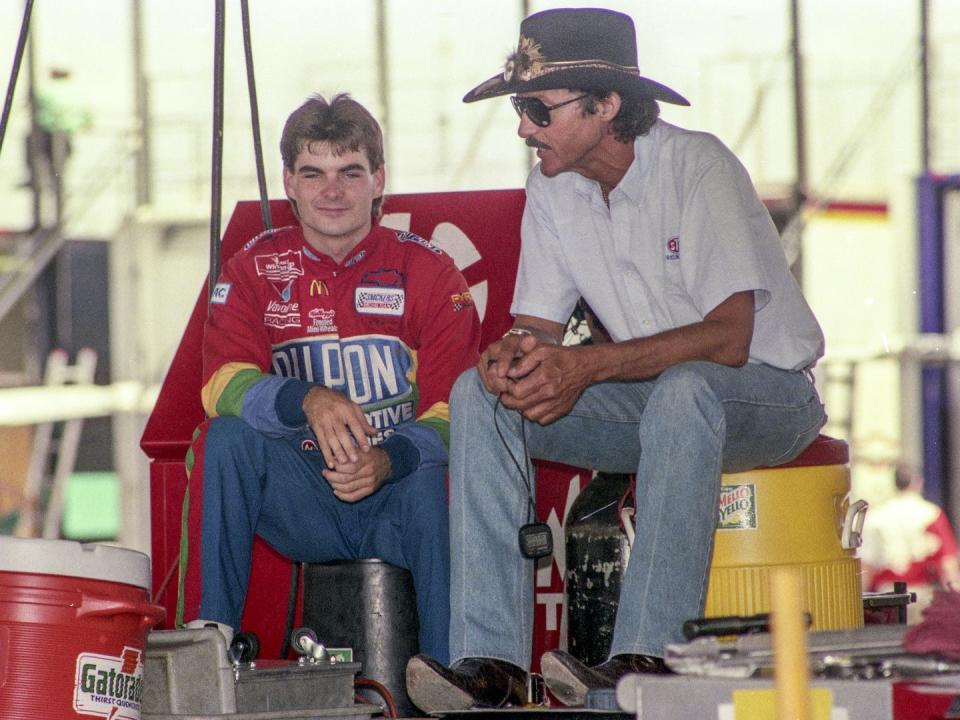
From a one-off in 1992 at age 20 until his retirement at age 44 in 2016, Gordon made 805 Cup starts, won 81 poles and 93 races, had 21 top-10 points seasons, hoisted four championship trophies, and won almost every significant race at least once. He’s in every meaningful motorsports hall of fame and is generally considered the first in the “new wave” of drivers who were as socially and commercially savvy in the boardroom as they were talented behind the wheel.
Richard Petty and David Pearson had brought NASCAR to the country’s attention in the 1960s and 1970s. Darrell Waltrip and Dale Earnhardt had led the way in the 1980s and 1990s. Gordon dominated throughout the 1990s and into the new century. A litany of well-backed, well-connected, aggressive young kids eventually moved into Gordon’s turf, marking the end of another era.
The first of his 93 victories—that’s third all-time behind Petty’s 200 and Pearson’s 105—came in the 1994 Coca-Cola 600 at Charlotte Motor Speedway. In their 40 previous starts Gordon and Evernham had finished top-5 in nine races and top-10 in five more, showing the potential that would soon blossom. They had been second to Earnhardt in the 1993 Coca-Cola 600 and fifth in that season’s fall race at CMS, and had two Xfinity victories there, both from the pole. Plus, they had started on pole for two of their three Cup races at the 1.5-mile track. Clearly, Charlotte was theirs for the taking.
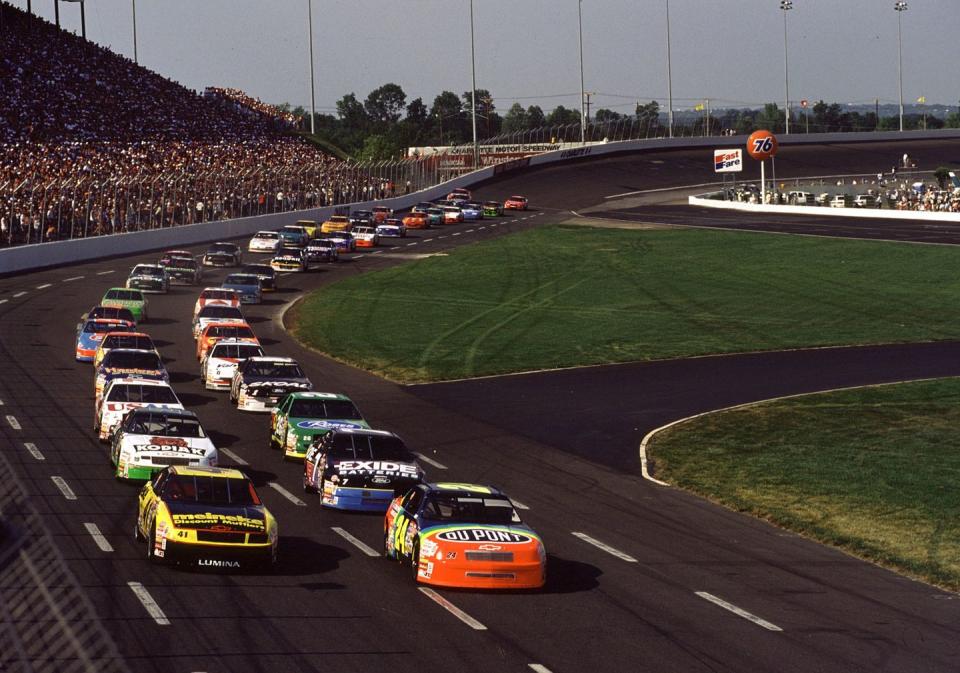
Rusty Wallace and Geoffrey Bodine dominated the 400-lapper, Wallace leading 197 laps and Bodine 101. But both made late-race pit stops for four tires and fuel. Evernham waited as long as possible, leaving his Chevrolet Lumina out until everyone else had stopped. Knowing they had only one chance, Evernham called for a splash of fuel and only right-side tires. The two-tire stop for 8.65 seconds got Gordon back out ahead of Wallace, whose four-tire stop had taken about 16 seconds. Gordon rode that strategy to his breakthrough victory over Wallace by almost four seconds.
“It wasn’t really a gamble,” Evernham said at the time, almost overcome by the emotion of his first victory. “We really didn’t have any choice; sometimes you’ve just gotta go for it. If you can’t beat ‘em one way, you have to beat ‘em another. I just can’t believe this.” Gordon concurred: “Two was the absolute best decision,” he said as tears covered his cheeks. “We didn’t need a full fuel load, and the two rights actually balanced the car and kept me fast. We weren’t about to beat Rusty otherwise. Nobody was; he was that good all night. But sometimes the fastest car doesn’t win.”
Later, when the impact of the moment cleared, Evernham explained his strategy. “We could have changed two or four or done a gas-and-go,” he said. “It made my decision easier when Rusty and Geoffrey took four ahead of us. We figured the time we’d save with a two-tire stop would be worth it in the long run. Hey … I’ll always bet on my guy when he’s leading with 10 laps left.”
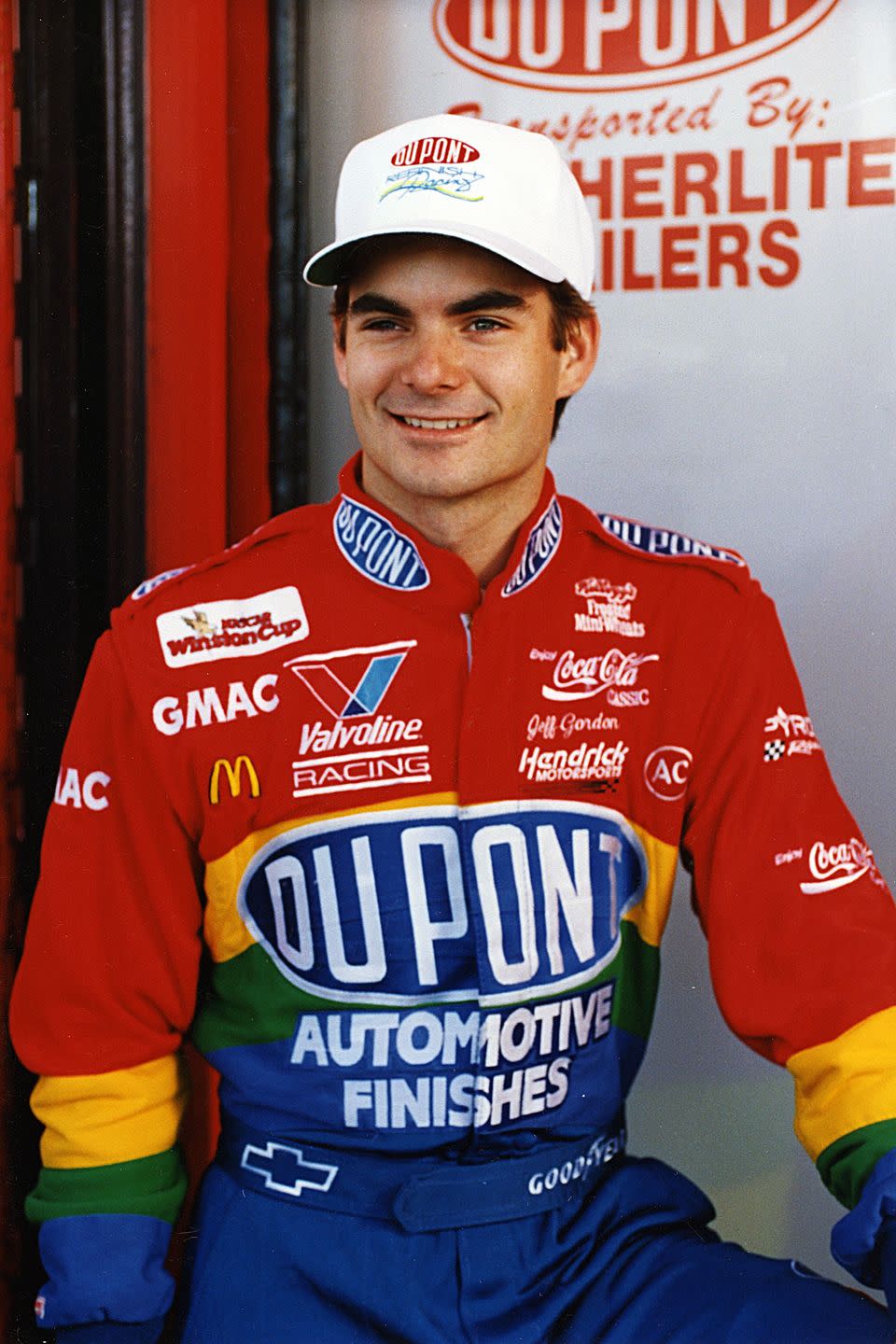
The winning strategy left Wallace’s crew chief second-guessing his four-tire call. “We never dreamed they would do what they did,” Buddy Parrott said of the Rainbow Warriors. “We figured we’d be racing (Bodine) for the win, not Gordon. It was a chancy move for them to take just two because I never thought it would work. Looking back, we should have taken two tires and won by a ton. We really had everybody beat bad that night.”
Gordon’s second career win came later that year, in the inaugural Brickyard 400 at Indianapolis Motor Speedway. He won 10, 10, and 13 races in 1996, 1997, and 1998, and was winless only three times in his 23 full seasons. He won the 600 again in 1997 and 1998, and the Brickyard 400 again in 1998, 2001, 2004, and 2014. He was an overwhelming choice—although not unanimously—for the 2019 NASCAR Hall of Fame.
But, wait … there’s more
• Most fans remember Earnhardt as NASCAR’s dominant figure during the eight years he and Gordon were rivals. But between 1993 and 2000 Gordon had more than twice as many victories and two more championships. Each beat the other four times in the final standings.
• Gordon was the seventh Cup Series driver to get his breakthrough NASCAR victory in the 600. David Pearson did it in 1961, Gordon in 1994, Bobby Labonte in 1995, Matt Kenseth in 2000, Casey Mears in 2007, David Reutimann in 2009, and Austin Dillon 2017.
• Three crew chiefs ran the show when Gordon won his five Brickyard 400s: Evernham in 1994 and 1998, Robbie Loomis in 2001 and 2004, and Alan Gustafson in 2014.
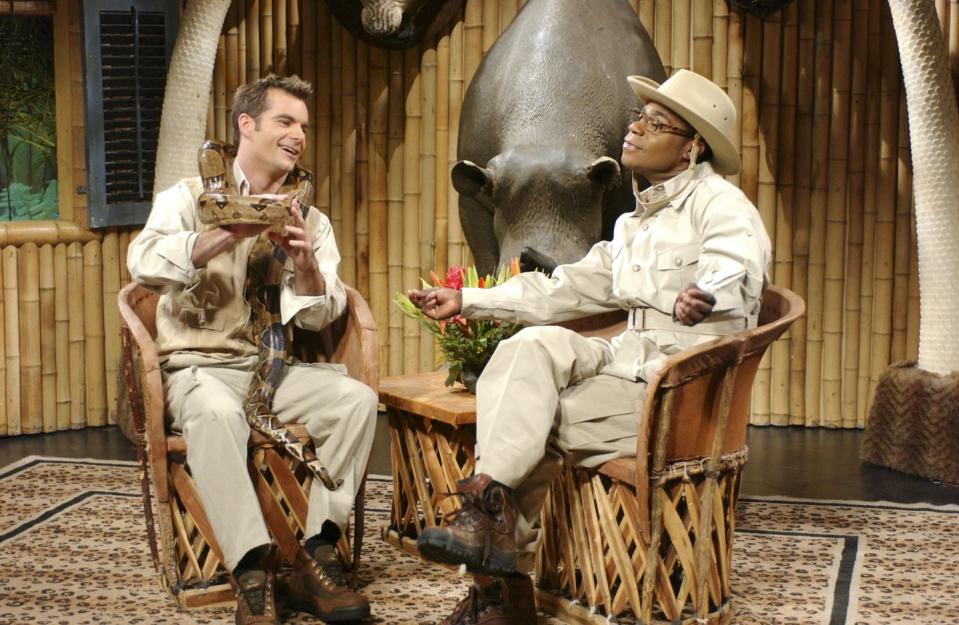
• Gordon’s on-track fame led to several notable off-track opportunities. He was among the first athletes to host Saturday Night Live and was a popular and well-received repeat guest on the morning show co-hosted by Regis Philbin and Kelly Ripa. He also appeared on (among others) Taxi, David Letterman, Jay Leno, The Today Show, Jimmy Kimmel, Ellen DeGeneres, 60 Minutes, Rachael Ray, and Jimmy Fallon.
• Even with his career at its height, Gordon strongly urged Rick Hendrick to add a relatively unknown Xfinity driver to his Cup lineup. He suggested some California surfer kid/off-road racer named Jimmie Johnson.

 Yahoo Autos
Yahoo Autos 